










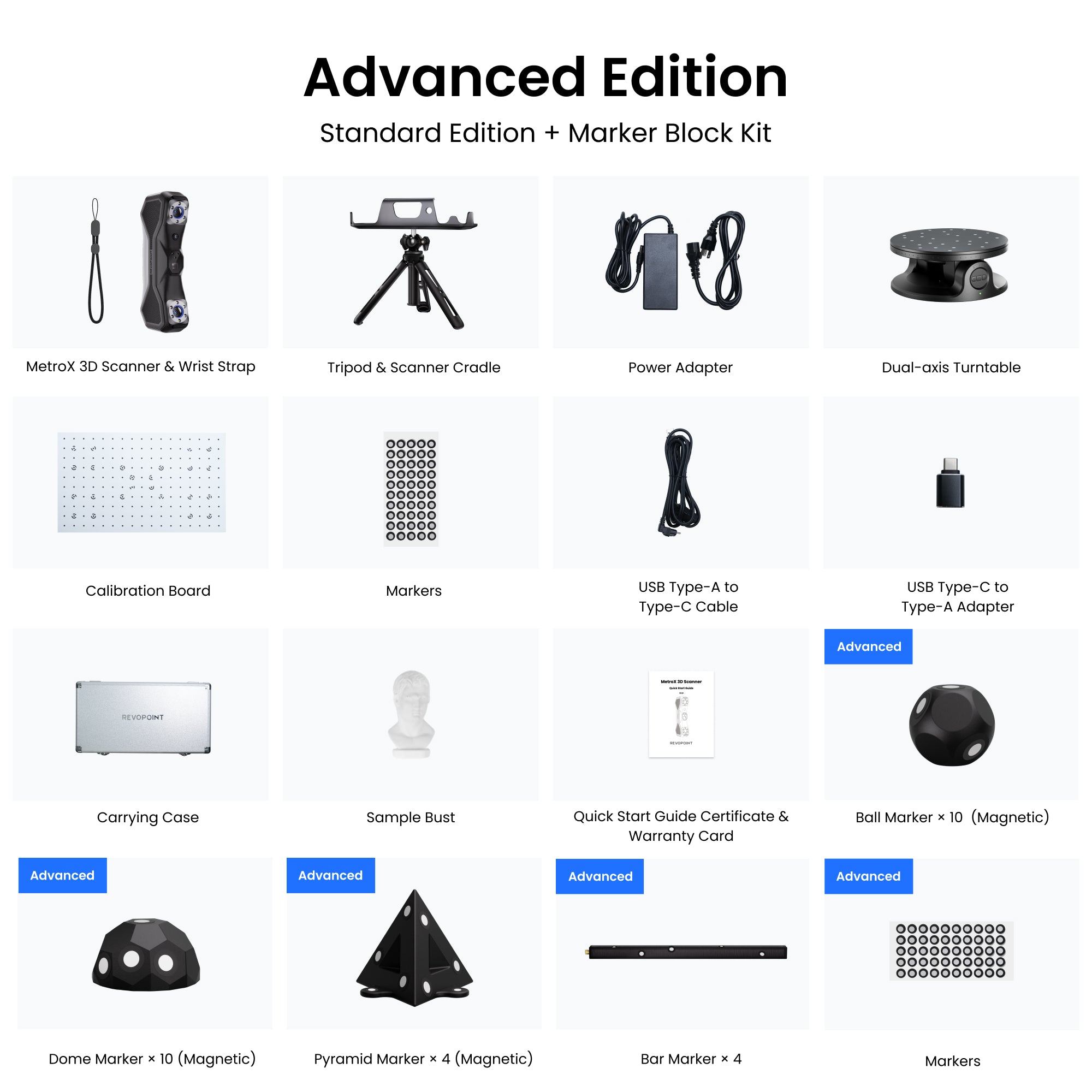











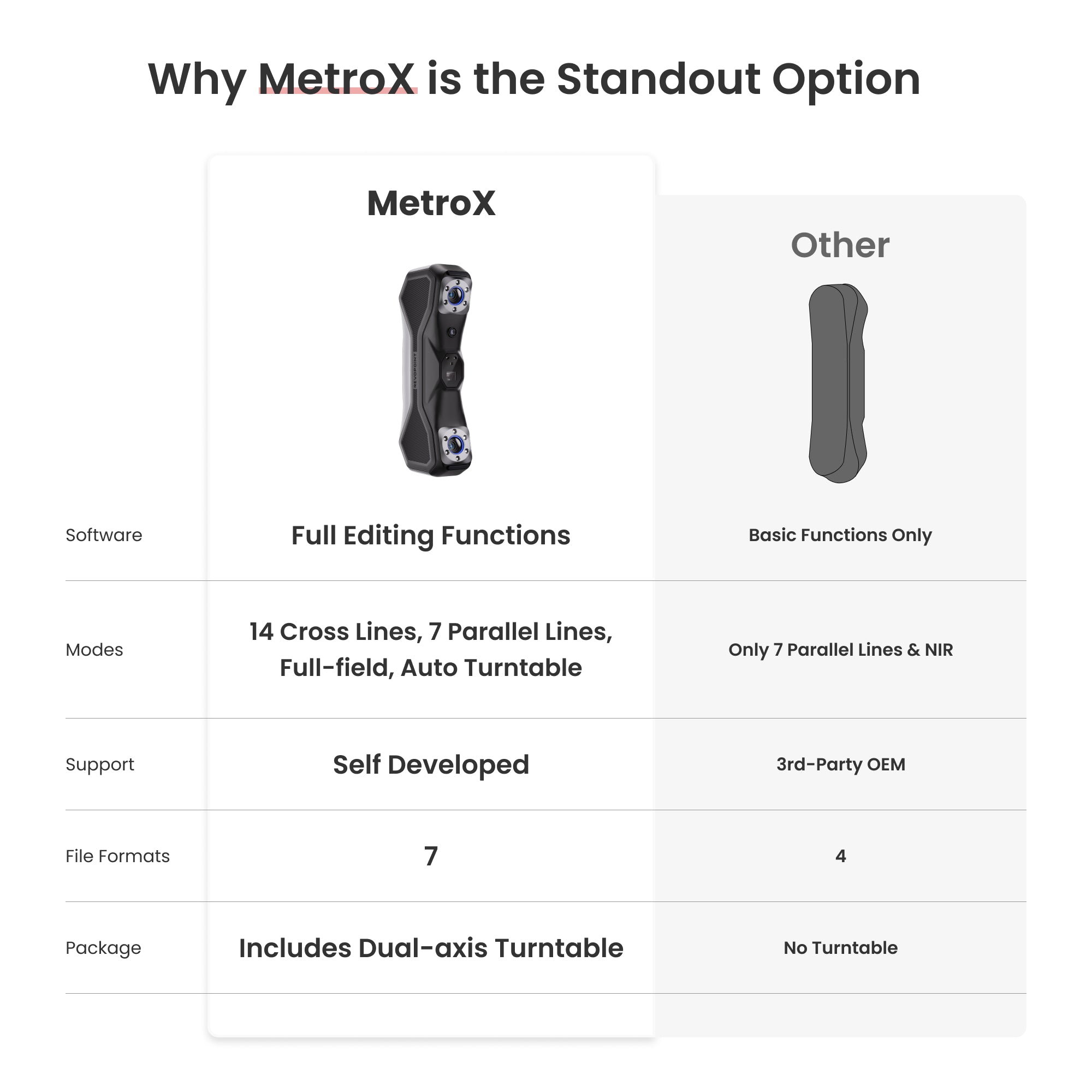



- Photos
- Videos
- Models
New
Industrial-grade
Muti-line Laser
Revopoint MetroX & MetroX Pro: Blue Laser Line & Full-field Structured Light 3D Scanners
ꔷ 4 Flexible Scanning Modes
ꔷ Rapid Scans: Up to 30 Cross-lines
ꔷ Industrial-grade Accuracy: Up to 0.02 mm
ꔷ Volumetric Accuracy: Up to 0.02 mm + 0.04 mm × L (m)
ꔷ Scanning Volume: Small to Medium Objects
ꔷ Up to 7,000,000 Points/s in Full-field Structured Light Mode
ꔷ Up to 2,000,000 Points/s in Multi-line Laser Mode
ꔷ PC-to-Mobile Scan Streaming
📩 Activation code is sent via email after purchasing the software bundle. 📬
Free shipping for most 3D scanners, 3-5 days fast receipt. Software is non-refundable, fast digital delivery via email.

Take a Closer Look


Up to 30 Cross Lines
Rapidly scan flat, shiny, or dark surfaces without using scanning spray.


Up to 15 Parallel Lines
Capture fine details, edges, and complex surfaces.


Full-field Blue Structured Light
Scan feature-rich workpieces marker-free at up to 7,000,000 Points/s.

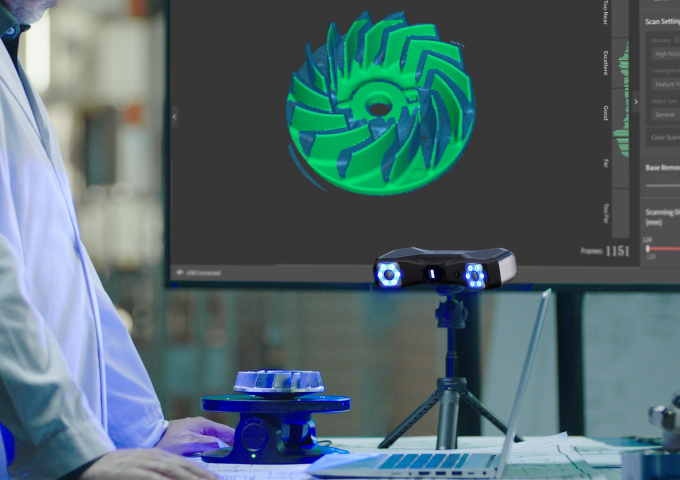
Auto Turntable
One-click scans with the Dual-axis Turntable, Revo Metro, and MetroX Series working together.


Industrial-grade Accuracy
Precision: Up to 0.01 mm
Accuracy: Up to 0.02 mm
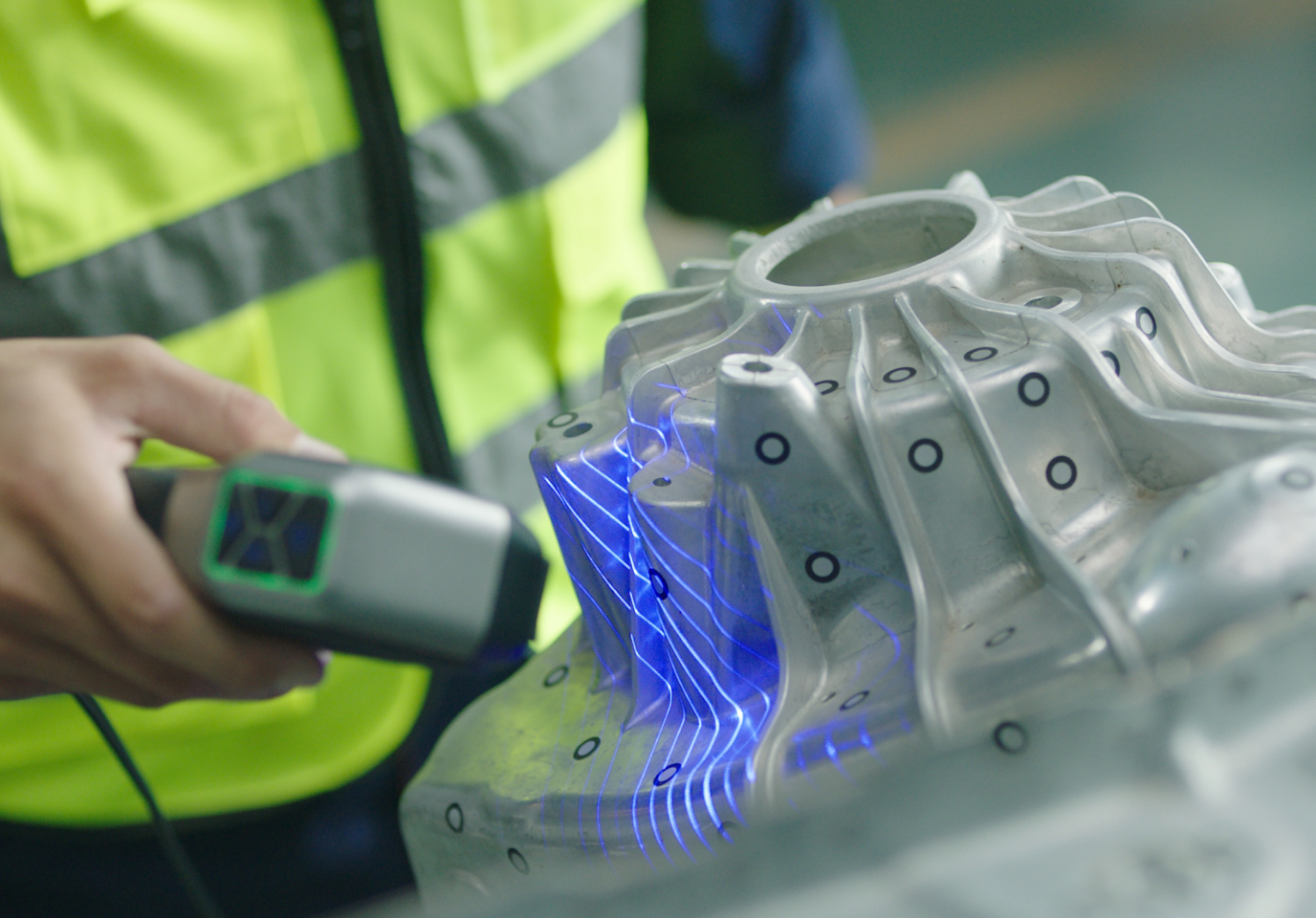

Flexible Single Capture Area
160 x 70 mm at 200 mm
320 x 215 mm at 400 mm
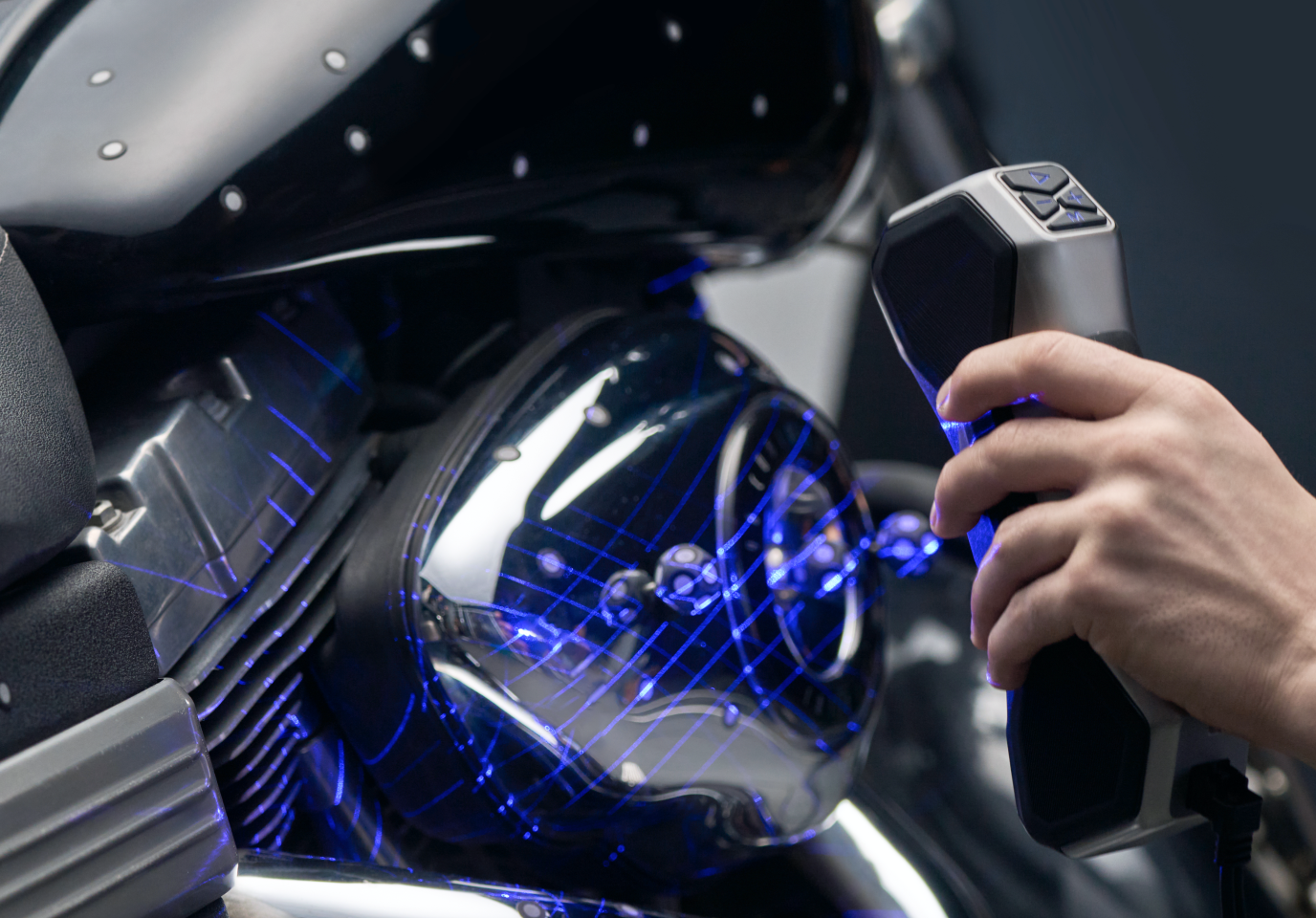
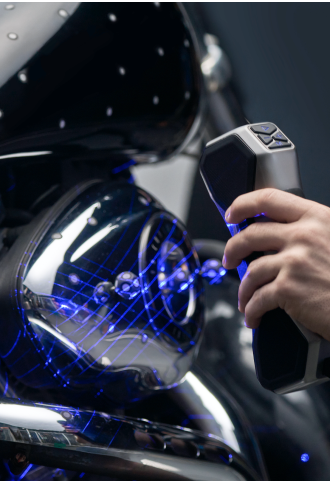
No Spray Needed
Scan Shiny or Black Surfaces


High-speed Scans
Up to 7,000,000 Points/s in Full-field Structured Light Mode
Up to 2,000,000 Points/s in Multi-line Laser Mode


Scan Faster with Marker Blocks
Set up a marker-rich environment for scans in no time with the handy set of shaped marker blocks in the MetroX Series Advanced Editions.


Free Powerful Software Revo Metro
Revo Metro does everything from point cloud
creation to fusion, meshing, editing, merging, importing, and exporting.


PC-to-Mobile Scan Streaming
Cross-Screen Displays


Fast GPU Powered Scans
Up to 60 FPS


Easy to Control
4 Buttons


HD RGB Camera
Create Vibrant 3D Models
Captured with the MetroX Series
Explore More >
What’s in the Box

MetroX 3D Scanner & Wrist Strap

Tripod & Scanner Cradle

Power Adapter*

Dual-axis Turntable

Calibration Board

Markers (6 mm) × 500
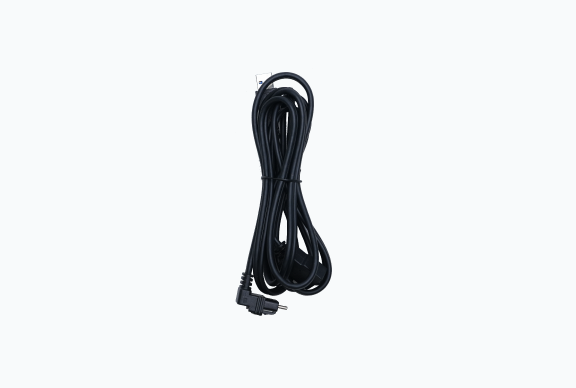
USB Type-A toType-C Cable

USB Type-C to Type-A Adapter

Carrying Case

Sample Bust

Quick Start Guide
Certificate & Warranty Card
*The power adapter may vary depending on the country or region.
MetroX Advanced Edition

Ball Marker × 10 (Magnetic)

Dome Marker × 10 (Magnetic)

Pyramid Marker × 4 (Magnetic)

Bar Marker × 4

Markers (6 mm) × 500
*The Marker Block Kit simplifies the workflow by making it much quicker to place markers when scanning featureless objects.

MetroX Pro 3D Scanner
& Wrist Strap

Tripod & Scanner Cradle

USB Type-C to Type-C Cable

Power Adapter*

Sample Bust

Markers(6 mm) × 500

Dual-axis Turntable

Carrying Case

Calibration Board

Quick Start Guide Certificate &
Warranty Card
*The power adapter may vary depending on the country or region.
MetroX Pro Advanced Edition

Ball Marker × 10 (Magnetic)

Dome Marker × 10 (Magnetic)

Pyramid Marker × 4 (Magnetic)

Bar Marker × 4

Markers(6 mm) × 500
*The Marker Block Kit simplifies the workflow by making it much quicker to place markers when scanning featureless objects.
MetroX vs. MetroX Pro
|
Name
|
MetroX
|
MetroX Pro
|
|
Scanning Type
|
Handheld and Desktop
|
|
|
Technology
|
Multi-line Laser Scan and Full-field Structured Light Scan
|
|
|
Scannable Object Size
|
Small to Medium
|
|
|
Single-frame Precision, up to
|
0.01 mm
|
|
|
Single-frame Accuracy, up to
|
0.02 mm
|
|
|
Volumetric Accuracy
|
0.025 mm + 0.05 mm × L (m), L is the length of the object.
|
0.02 mm + 0.04 mm × L (m), L is the length of the object.
|
|
Fused Point Distance, up to
|
0.05 mm
|
|
|
Working Distance
|
200 ~ 400 mm
|
|
|
Single Capture Area at Nearest Distance
|
160 × 70 mm at 200 mm
|
|
|
Single Capture Area at Furthest Distance
|
320 × 215 mm at 400 mm
|
|
|
Angular Field of View (H x V)
|
43 × 33°
|
|
|
Minimum Scan Volume
|
10 × 10 × 10 mm
|
|
|
Maximum Scan Volume
|
1 × 1 × 1 m
|
|
|
Scanning Speed, up to
|
Multi-line Blue Laser: 800,000 Points/s
Full Field Blue Light: 7,000,000 Points/s
|
Multi-line Laser Scan: 2, 000, 000 Points/s
Full-field Structured Light Scan: 7,000,000 Points/s
|
|
RGB Camera Resolution
|
2 Megapixels
|
|
|
Color Scanning
|
Only in Auto Turntable Mode
|
|
|
Tracking Methods
|
Feature, Marker, Global Marker
|
|
|
Outdoor Scanning
|
No
|
|
|
3D Light Source
|
14 Blue Cross Laser Lines
7 Blue Parallel Laser Lines
62 Line Blue Full-field Structured Light
|
30 Blue Cross Laser Lines
15 Blue Parallel Laser Lines
62 Line Blue Full-field Structured Light
|
|
Fill Lights
|
12 Blue LEDs
|
|
|
CPU
|
4 core ARM, 2.0 GHz
|
|
|
Built in Chip Computing
|
Depth Computing
|
|
|
Buttons
|
4
|
|
|
Minimum PC Requirements
|
macOS:
CPU: M1 Pro/Max/Ultra, RAM ≥ 16GB Windows: CPU: Intel i7 13th Gen or AMD Ryzen 7 5800, RAM ≥ 32GB, GPU : NVIDIA GeForce RTX 3060 (8GB) Note: ① If you're unsure about the CPU configuration, please ensure that the CPU has cores≥8, threads≥16, and a base frequency ≥2.4GHz. ② Only in Laser Line Scanning modes, a dedicated graphics card is required for acceleration. AMD and MAC GPUs do not currently support acceleration. |
macOS:
CPU: M3 Pro/M4, RAM ≥ 18GB Windows: CPU: Intel i7 13th Gen or AMD Ryzen 7 5800, RAM ≥ 32GB, GPU: NVIDIA GeForce RTX 3060 (8GB) Note: ① If you're unsure about the CPU configuration, please ensure that the CPU has cores≥8, threads≥16, and a base frequency ≥2.4GHz. ② Only in Laser Line Scanning modes, a dedicated graphics card is required for acceleration. AMD and MAC GPUs do not currently support acceleration. |
|
Recommended PC Requirements
|
macOS:
CPU: M2 Pro/Max/Ultra, M3 Pro/Max/Ultra, RAM ≥ 24GB Windows: CPU: Intel i9 12th Gen or better, RAM ≥ 64GB, GPU: NVIDIA RTX 4060 (8 GB) or better |
macOS:
CPU: M4 Pro or better, RAM ≥ 24GB Windows: CPU: Intel i9 12th Gen or better, RAM ≥ 64GB, GPU: NVIDIA RTX 4060 (8 GB) or better |
|
Compatible Operating Systems
|
Windows 10/11 (64-bit), macOS 11.0 or better
|
|
|
Output File Formats
|
PLY, OBJ, STL, ASC, 3MF, GLTF, FBX
|
|
|
Ready to Print 3D Models
|
✔
|
|
|
Connector Type
|
USB Type-C
|
USB Type-C to Type-C
|
|
Power Requirements
|
DC 12V, 3A
|
|
|
Scanner Weight
|
508 g
|
|
|
Dimensions (L x W x H)
|
209 × 88 × 44 mm
|
|
|
Special Object Scanning
|
Please use scanning spray when scanning transparent or specular surfaces in Multi-Line Laser modes. Using scanning spray is recommended when scanning transparent, black, specular, or highly reflective surfaces in Full-Field Structured Light modes.
|
|
|
User Recalibration
|
Yes
|
|
|
Supported Accessories
|
Dual-axis Turntable, Marker Block Kit
|
|
YouTube Reviews
FAQ
What's the difference between MetroX and MetroX Pro?
(1) Accuracy: MetroX's volumetric accuracy is 0.025 mm + 0.05 mm × L (m), while MetroX Pro's is 20% better at 0.02 mm + 0.04 mm × L (m).
(2) Scanning Modes: MetroX has 14 cross lines and 7 parallel laser lines, while MetroX Pro has 30 cross lines and 15 parallel laser lines. Both models share the same Full-field and Auto Turntable modes.
(3) Scanning Speed: MetroX's multi-line laser scanning can reach up to 800,000 points per second, whereas MetroX Pro can scan up to 2,000,000 points per second.
What are MetroX’s PC requirements? Do I need a powerful computer to use MetroX?
Minimum PC Requirements:
Windows
System Version: Windows 10/11 (64-bit)
CPU: Intel i7 13th Gen 10700 or AMD Ryzen 7 5800
RAM: ≥ 32 GB
GPU: NVIDIA GeForce RTX 3060 (8 GB)
macOS
System Version: macOS 11.0 or better
CPU: M1 Pro/Max/Ultra
RAM: ≥ 16 GB
Recommended PC Requirements:
Windows
System Version: Windows 10/11 (64-bit)
CPU: Intel i9 12th Gen or better
RAM: ≥ 64 GB
GPU: NVIDIA RTX 4060 (8 GB) or better
macOS
CPU: M2 Pro/Max/Ultra, M3 Pro/Max/Ultra
RAM: ≥ 24 GB
If you’re unsure about the CPU configuration, please ensure that the CPU has cores ≥ 8, threads ≥ 16, and a base frequency ≥ 2.4 GHz.
How do I use Auto Turntable mode?
Attach the scanner cradle to the tripod on a stable surface. Place the scanner in the cradle and connect it to your PC. Start Revo Scan MetroX, set up the Dual-axis Turntable, and connect via Bluetooth in Revo Scan. Choose Feature or Marker Scan and select Auto Turntable mode in scan settings. For details, check the Auto Turntable section of the manual.
Does Revo Scan 5 MetroX need internet access to work?
No, it doesn’t need to be connected to an internet-capable network to scan and edit your models. However, you need access to the internet for software updates and file transfers.
What formats can Revo Scan 5 MetroX export?
Revo Scan 5 MetroX can export your models in PLY, OBJ, STL, ASC, 3MF, GLTF, and FBX for compatibility with most 3D modeling, slicer, and CAD software.
Point Cloud model: PLY, OBJ, ASC
Mesh model: PLY, OBJ, STL, FBX, GLTF, 3MF
Texture model: PLY, OBJ, FBX, GLTF
Do I need to use markers?How do I use markers in MetroX scans?
Markers are necessary for laser scanning modes but are optional in structured light scanning, especially for detailed objects. However, using markers generally results in more stable alignment (stitching).
1. Place markers 6 - 7 cm apart. If the object is too small to place markers on, use the Dual-axis Turntable or Marker Block Kit or place markers around it. Avoid using soft pads or cloths with markers.
2. Don't use too many markers, but ensure that at least 5 markers are placed irregularly per scanned frame.
3. Try to place more markers at the key locations, such as the edges, grooves, and other complex surfaces.
4. Ensure there is sufficient marker coverage before starting the scan, and none of the markers are covered.
5. Ensure the markers are securely stuck and have no lifted edges.
6. Avoid markers on curved surfaces to prevent deformation.
7. Don't use markers under direct sunlight, as the reflective light will affect the scan results.
8. Repeated use of sticky markers is not advised, as their adhesive weakens and can shift during scans, disrupting tracking.
9. For scans with high accuracy requirements, it's recommended to use markers with an inner diameter of 6 mm. Note: Mixing different sizes of markers may affect the scan's accuracy.
Can I switch the scanning modes during a scan?
Yes. In the same tracking mode (Marker Tracking or Feature Tracking), you can pause the scan, switch to a different mode, and resume scanning. You can also obtain data from other parts of an object using various scanning modes and then merge the data with the Revo Scan for MetroX software to achieve a complete and accurate 3D model. This method is particularly suitable for scanning complex or large objects.
Can MetroX scan black surfaces, metal surfaces, or transparent surfaces?
Yes, MetroX can scan black objects directly using the Cross Lines and Parallel Lines modes. However, for better detail, scanning spray is recommended. When scanning black surfaces in Full Field or Auto Turntable modes, scanning spray is necessary. You can get one from the add-on list.
Yes, MetroX can scan metal objects directly using Cross Lines and Parallel Lines modes. You can also scan dull metal surfaces directly in Full Field and Auto Turntable modes. However, for very shiny metal surfaces, a scanning spray is necessary when using these modes. Scanning sprays are available in the add-on list.
Scanning spray is needed when scanning transparent or specular surfaces. You can get one from the add-on list.
Can MetroX safely scan people or animals?
Like most industrial laser scanners, the MetroX is unsuitable for scanning humans or animals. When using the MetroX, please avoid looking directly into the laser beam.
MetroX is designed to scan small to medium-sized objects. It uses a Class 2M laser projector, and Class 2M lasers are generally safe for accidental viewing with the naked eye but can be hazardous if viewed with optical instruments or looking into the laser beam for a long period. Here are Class 2M Laser Safety Tips:
(1) Avoid looking directly at it at close range.
(2) To avoid retina damage, don’t look directly into the laser beam through optical instruments capable of magnifying it (e.g., telescopes, and camera lenses).
(3) To prevent laser reflection, avoid placing reflective surfaces like mirrors or glass in the path of the laser beam.
What is a laser scanner?
A laser scanner is a device that uses laser technology to capture precise 3D measurements of objects by projecting laser lines or points and recording their reflections to create detailed digital models.
What makes the Revopoint MetroX laser scanner different from other laser scanners?
The MetroX combines multi-line blue laser scanning and full-field structured light, offering metrology-grade accuracy up to 0.02 mm and extremely high point capture speeds (up to 7 million points per second). Its flexible scanning modes, compatibility with markers, and user-friendly software set it apart for precise, efficient scanning of small to medium objects.
















